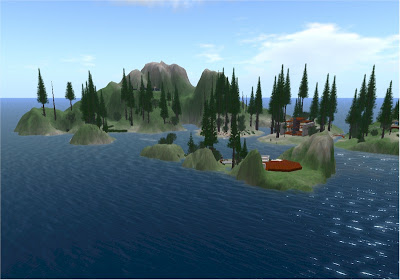
- The largest problem was venues constructed for appearance—visual impact—rather than maximum capacity of venue
- Lack of support for technical problems
- The venue lacked the support people or knowledge to deal with occasional trouble-makers
To a large extent these problems were the result of either ignorance or lack of interest in the art form. Most concert venues in virtual reality are built with the simple goal of attracting more people to simulation in the hopes that it will directly or indirectly serve commercial goals: The hope is that people will stay and shop at virtual stores, buy or rent virtual property in a lovely sim they have visited, and/or the increased traffic in the simulation will boost ranking on the SL search engine, rather like boosting Google rankings.
Naïve virtual builders are swept up in the desire to create a wonderful replica of gothic cathedrals or baroque salons. They believe that this visually impressive space with detailed, high resolution textures will be a fantastic place to hold classical concerts. The reality is that the amount of RAM needed to draw & re-draw all those textures at 15 fps or above for ideal display means that with the addition of just a few moving avatars in the scene, people will experience lag and crashing.
As avatars move about a visually rich environment, their computer has to draw and re-draw all the textures from different angles and proximities as they move their field of vision. The more avatars doing that in a simulation, all running on the same server, the slower the simulation becomes until eventually the server can crash. Individuals within such a slow moving simulation experience problems called “lag” which disrupt their enjoyment of the experience in various ways, often even causing individual avatars to “crash,” to be abruptly disconnected from the grid.
I brought this problem back to my own non-profit, open-learning community and gained consensus that we would hold a broad-based consultation to explore the idea of constructing a classical music venue built purely for music. We spent a half-day meeting with sound experts, builders, event planners with experience with large SL events, and classical musicians.
From that consultation we came away with the following advices of excellence:
- Use as few textures and as low-resolution textures as possible
- Keep the audience view as simple as possible: looking out to open sea was thought ideal–the less the avatar’s viewer has to draw the more efficiently the program runs
- Build the venue in two simulations with the stage in one simulation and the audience area in a separate simulation. That way, audience lag will not affect the performer(s)
We have used all these advices in the construction of our classical amphitheatre, placing it on its on islet that we simply called “Music Island”.




1 Comment
Bygningsentreprise
Beautiful, its like a place in one fairytale story.
Comments are closed.